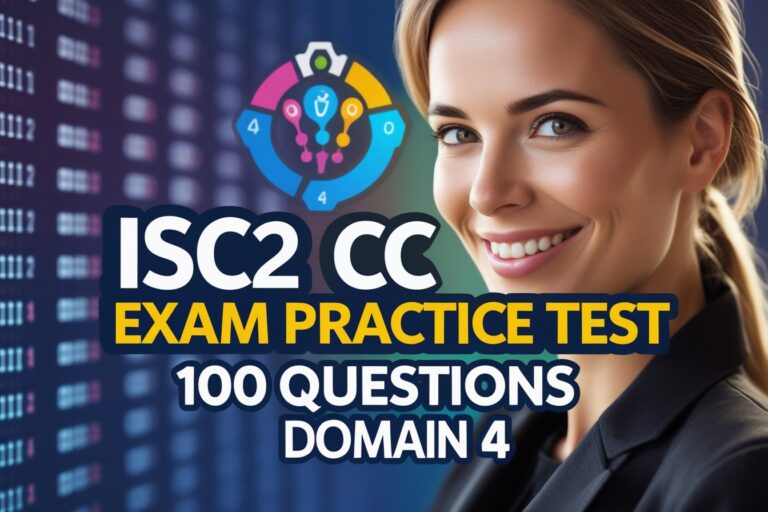Read Also: Top 20 MCQ Questions on Encoding and Modulation
1) The GSM technology uses a combination of … multiplexing techniques.
A. FDMA and TDMA
B. FDMA and TDMA
C. SDMA and TDMA
D. FDMA and CDMA
2) In GSM communication, a maximum of … with the combination of FDMA and TDMA channels for transmitting and receive can be realized.
A. 992
B. 991
C. 993
D. 999
3) GSM system consists of the … administrative region assigned to one mobile switching center.
A. minimum one
B. maximum one
C. minimum two
D. maximum two
4) State whether the following statements about the GSM system are True or False.
i. Each administrative region in the GSM system is subdivided into one or many location areas(LA)
ii. Traffic from the mobile station is routed through the mobile switching center.
iii. Several BSC’s are controlled by one BTS.
A. i-True, ii-True, iii-True
B. i-True, ii-False, iii-False
C. i-False, ii-True, iii-False
D. i-True, ii-True, iii-False
5) The … includes Mobile Equipment(ME) and the Subscriber Identity Module(SIM).
A. Base Station Subsystem(BSS)
B. Base Station Controller(BSC)
C. Mobile Station(MS)
D. Mobile Switching Center(MSC)
6) The network and switching subsystem includes which of the following entities.
i. Mobile Switching Center(MSC)
ii. Operation and Maintenance Center(OMC)
iii. Visitor Location Register(VLR)
iv. Authentication Center(AUC)
A. i, ii and iii only
B. ii, iii and iv only
C. i, iii and iv only
D. All i, ii, iii and iv
7) The … includes the Base Transceiver Station(BTS) and the Base Station Controller(BSC).
A. Base Station Subsystem(BSS)
B. Base Station Controller(BSC)
C. Mobile Station(MS)
D. Mobile Switching Center(MSC)
8) State whether the following statements about the Base Station Subsystem(BSS) are True or False.
i. BTS is usually placed in the center of a cell.
ii. Each BTS has between 16 to 32 transceivers depending on the density of users in the cell.
A. i-True, ii-True
B. i-True, ii-False
C. i-False, ii-True
D. i-False, ii-False
9) Mobile switching center does which of the following functions.
i. It acts like a typical switching node for the PSTN.
ii. It includes the databases to store information to manage the mobility of a roaming subscriber.
iii. It provides all functionality needed to handle a mobile subscriber.
A. i and ii only
B. ii and iii only
C. i and iii only
D. All i, ii and iii
10) In the …, the mobile remains attached to the same base station transceiver, but the change in the channel or slot.
A. Inter-BSC handover
B. Intra-BTS handover
C. Inter-MSC handover
D. Inter-BTS Intra BSC handover
11) The … occurs when changing between networks.
A. Inter-BSC handover
B. Intra-BTS handover
C. Inter-MSC handover
D. Inter-BTS Intra BSC handover
12) Which of the following is/are the parts of IMEI.
i. Type Approval Code(TAC)
ii. Final Assembly Code(FAC)
iii. Serial Number(SNR)
A. i and ii only
B. ii and iii only
C. i and iii only
D. All i, ii and iii
13) Which of the following is/are the parts of International Mobile Subscriber Identity(IMSI)?
i. Spare(SP)
ii. Mobile Network Code(MNC)
iii. Mobile Country Code(MCC)
A. i and ii only
B. ii and iii only
C. i and iii only
D. All i, ii and iii
14) … are the main telephony services provided by GSM.
i. Voice calls
ii. Facsimile
iii. Conferencing
iv. SMS
A. i, ii and iii only
B. ii, iii and iv only
C. i, ii and iv only
D. All i, ii, iii and iv
15) Layer 1 of the GSM signaling protocol is the … which uses the channel structure over the air interface.
A. physical layer
B. data-link layer
C. network layer
D. communication layer
16) Layer 3 of the GSM signaling protocol is divided into which of the following sub-layers.
i. Radio Resources Management(RR)
ii. Mobility Management(MM)
iii. Connection Management(CM)
A. i and ii only
B. ii and iii only
C. i and iii only
D. All i, ii and iii
17) … encrypts blocks of user data using a symmetric key shared by the mobile station and the BTS.
A. Interleaving
B. Ciphering
C. Modulation
D. Burst formating
18) … adds some binary information to the ciphered block for use in synchronization and equalization of the received data.
A. Interleaving
B. Ciphering
C. Modulation
D. Burst formating
19) … is a temporary identifier assigned by the serving VLR used in place of the IMSI for identification and addressing of the Mobile Station.
A. Mobile Station Roaming Number(MSRN)
B. Local Mobile Subscriber Identity(LMS)
C. Temporary Mobile Subscriber Identity(TMSI)
D. Cell Identifier(CI)
20) … rearranges a group of bits in a particular way to improve the performance of the error-correction mechanisms.
A. Interleaving
B. Ciphering
C. Modulation
D. Burst formating
Answers:
- B. FDMA and TDMA
- A. 992
- A. minimum one
- D. i-True, ii-True, iii-False
- C. Mobile Station(MS)
- C. i, iii and iv only
- A. Base Station Subsystem(BSS)
- B. i-True, ii-False
- D. All i, ii and iii
- B. Intra-BTS handover
- C. Inter-MSC handover
- D. All i, ii and iii
- B. ii and iii only
- C. i, ii and iv only
- A. physical layer
- D. All i, ii and iii
- B. Ciphering
- D. Burst formating
- C. Temporary Mobile Subscriber Identity(TMSI)
- A. Interleaving
Read Next: 20 MCQ Questions on Fundamentals of GPRS and WAP










1 Comment
You are welcome. Please subscribe to our email newsletter, push notification, and social media accounts for future updates.